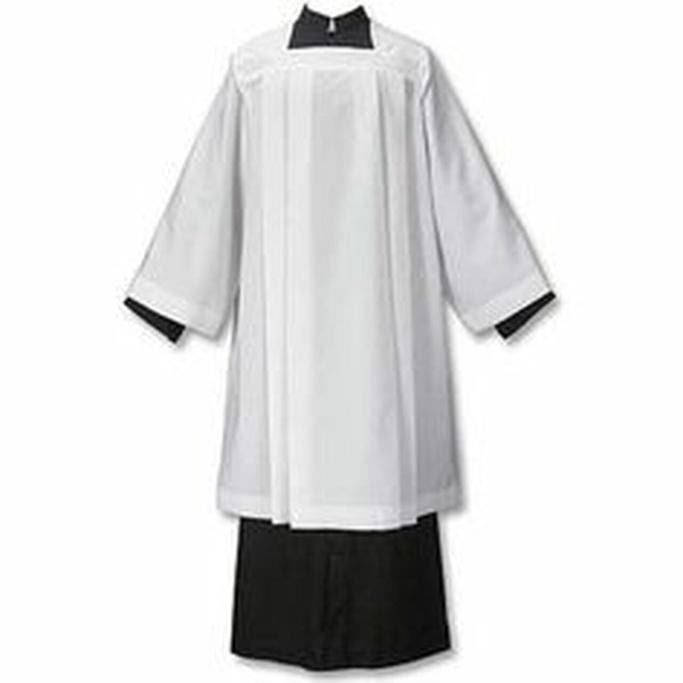So you’re looking at clergy vestments and you aren’t sure what you’re looking for. The uninitiated and the unordained only very seldom are. Be that as it may, if you’re looking at a set of garments that you believe to be vestments, there’s a pretty good chance you’re looking at one of the following.
- Robe: The robe, also styled as a set of robes, is the basic, quintessential clergy vestment. There are clergy robes designed for both men and women, from a variety of materials. Some of them button down the front and others are fastened with a belt known as a cincture, which is also often paired with another garment known as a cassock. There’s more detail on that below.
- Stole: The stole is a very interesting vestment that is most often paired with a set of robes. Oftentimes, the stole is the calling card of the priest or celebrant officiating a Eucharist sermon. The stole, then, is the long garment that looks like a strip of cloth and is usually worn draped over the shoulders. The theory behind why it is the customary companion of a priest presiding over a Eucharist service is that at some point in the past, the stole may have been used as a napkin to wipe off the chalice between participants.
- Tippet: A tippet looks just like a stole, with the only recognizable difference being that tippets are usually loss floridly designed than stoles. Most tippets are undecorated and have the appearance of a plain piece of cloth in a single, plain color. They’re worn in basically the same fashion as stoles.
- Surplice: The surplice is an interesting vestment that finds a lot of use in churches and processions. A lot of people wear them, but no one seems to agree on who can or should wear them or why. It is a knee length white garment that typically has a square neck and wide sleeves. It can be plain white cotton or linen or decorated with lace or other patterning. Typically, priests wear them over cassocks, although altar servers, acolytes and choristers may all wear them.
- Alb: The alb is like the surplice. It is a white vestment that is typically made from cotton or linen – the name alb comes from Medieval Latin and means “white.” There’s only one difference, really. The surplice is shorter than the alb, which typically reaches to the ankles.
The following are also sometimes considered clergy vestments:
- Cassock: Cassocks are long, plain robes with long sleeves that are commonly worn by priests. The cassock is not always considered a vestment, as originally it was reserved for priests as “everyday wear.” That is, priests typically wore a vestment all the time when they were not actively engaged in a service. They are usually black but sometimes in different liturgical colors such as red or purple. They are also often girdled by a cincture. They also often button down the front.
- Rabat: The rabat is a common piece of priestly wear, but like the cassock it is not always considered a liturgical vestment. It is a sleeveless garment that looks a little bit like a vest and can be worn on top of a white shirt with a high collar to give it the appearance of a tab collar clergy shirt.
Ready to learn more about these interesting categories of vestments? Perhaps you’ve learned enough and you’re ready to dazzle your acquaintance with your newfound knowledge of clerical garments.
Whatever the case, if you want to learn more about them or by some chance have unanswered questions, contact the professions at Divinity Clergy Wear. You can learn more by reading their blog at DivinityClergyWear.com, but you can also call them up and ask them for help directly at 877-453-3535.




